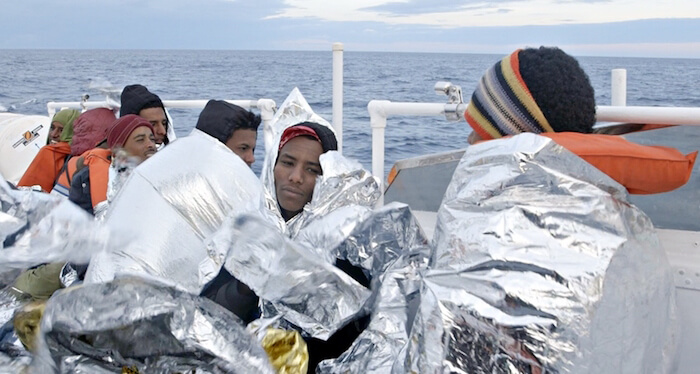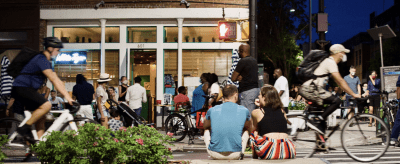Lampedusa in Winter: Refugees Welcome?

Lampedusa in Winter
Directed by Jakob Brossmann
August 19-21 at Anthology Film Archives
The Italian island of Lampedusa lies a mere 68 miles from the coast of North Africa. I say “mere.” To those of us with few life-or-death cares, what is 68 miles? An hour-long drive? A relatively brisk bus or train ride? But what if those 68 miles were the difference between all manner of abject poverty and the promise (only and ever the promise) of a better life? Suddenly that distance takes on added import. On the one hand, it’s a potential bridge to something greater. On the other, it’s an abyss that might swallow you whole.
Jakob Brossmann’s absorbing documentary Lampedusa in Winter begins with the worst outcome: Over black, we hear a distress signal sent from an overcrowded migrant ship. (Lampedusa is ground zero for many North Africans hoping to make their way to Europe.) The rescue operator instructs the woman on the other end on GPS coordination, and promises help is on the way. Then Brossmann cuts to a Lampedusa Coast Guard vessel as it searches, fruitlessly, for the migrant boat and any survivors. Day gives way to night. Nothing and no one is found. And life goes on.
There’s a clinical chill to this opening passage, made all the more pronounced by the film’s unobtrusive technique. Beyond opening and closing credit crawls, there are no identifying titles. Nor are there any talking head interviews. As that museum-ready title suggests (the film was actually assembled from two wintertime shoots, a year apart), Brossmann is primarily interested in portraiture.
Fly-on-the-wall style, we spend time in the company of Lampedusa’s residents: There’s the local DJ, who reports on the state of the 6000+ resident island like the sarcastic P.A. announcer in M*A*S*H. There’s beleagured mayor Giusy Nicolini, juggling the many concerns of the mostly maritime population, which include everything from the the piles of uncollected garbage on the streets to a mainland ferryboat that is long out of date.
The African migrant influx is, of course, the film’s—and this island community’s—major concern. Even when it’s not being directly addressed onscreen, Brossmann makes sure the issue is at least prominently and provocatively backgrounded. One especially powerful image out of many: A junkyard filled to bursting with the wrecks of migrant ships, visual testament to life-altering exoduses that are no longer extraordinary but expected.
You might also like 



















